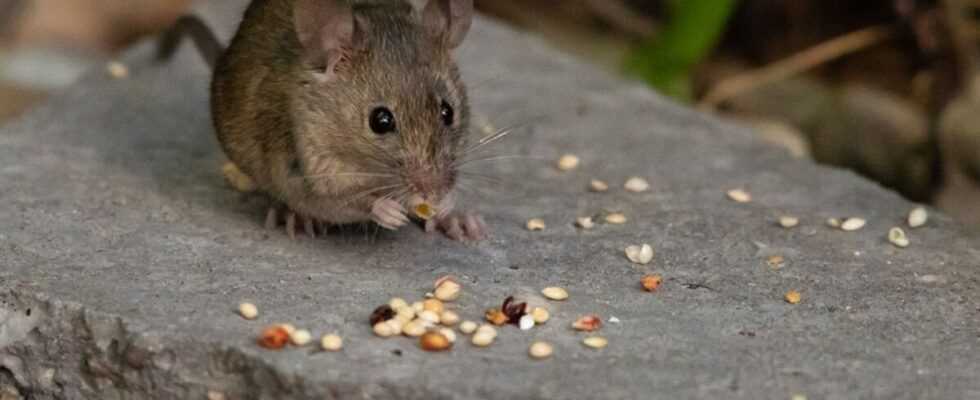Hantavirus: what is it exactly?
Hantaviruses are viruses of the family of Bunyaviridae. To date, 48 hantaviruses have been officially listed: they are present all over the world. Rodents are the main hosts of hantaviruses – in Europe and Asia these viruses particularly affect voles and field mice; on the American continent, they are rather found in mice and rats.
In infected rodents, hantaviruses remain silent: rodents are said to be “healthy carriers”. However, they can infect humans and be the cause of two diseases, called viral zoonoses: in Europe and Asia, they are responsible for haemorrhagic fevers with renal syndrome (RHSF) while in the United States. United, they cause cardiopulmonary hantavirus syndromes (SCPH).
To know. In mainland France, hantaviruses are mainly present in the north-eastern quarter of the country. Contamination mostly occurs in spring and summer.
Hantavirus and coronavirus: what are the differences? Like viruses of the coronavirus family, hantaviruses are transmitted to humans via animals and are responsible for viral zoonoses (FHSR or SCPH for hantaviruses, Covid-19 for the SARS-CoV-2 coronavirus) .
But the resemblance ends there: hantaviruses are not transmitted between humans (according to the Ministry of Health) and there is no vaccine against hantavirus (while there are several vaccines against SARS-CoV-2 ). In addition, each year, there are only around 100 cases of hantavirus infection recorded in France.
Hantavirus: what are the symptoms of renal hemorrhagic fever (RHSF)?
Hantavirus: how is it transmitted? In Europe and Asia, hantaviruses are transmitted through the inhalation of contaminated dust: specifically, when we inhale micro-particles of saliva, urine or excrement from rodents affected by the virus. More rarely, contamination can occur through contact between the urine, droppings or saliva of contaminated rodents and the skin (even if it is not scratched). You can also get hantavirus from drinking contaminated water or eating contaminated food.
Thus, hantavirus infections mainly concern people who are used to going for walks in the forest or the countryside, people regularly in contact with rodents, and people who work or live in rural areas – farmers, market gardeners, lumberjacks, carpenters, cabinet makers, forest guards …
Renal syndrome haemorrhagic fever (RHSF): symptoms. After an incubation time (i.e. the time between viral infection and the first manifestations of the disease) of 1 to 6 weeks, the following symptoms are observed in the patient:
- A fever above 38 ° C accompanied (or not) by chills,
- Headaches (headache),
- Significant muscle pain (especially back, thoracic and / or abdominal pain),
- Vision disorders (visual accommodation disorders, like acute myopia),
- Thrombocytopenia (i.e. an abnormally low level of platelets in the blood),
- Kidney damage (which may be mild, moderate or severe),
- In about a third of cases: discreet respiratory manifestations.
To know. Renal syndrome haemorrhagic fever (RHSF) can also be asymptomatic. The disease is fatal in 0.4% to 10% of cases.
Hantavirus: diagnosis and treatment of renal hemorrhagic fever (RFSF)
Renal syndrome haemorrhagic fever (RHSF): the diagnosis. In addition to the clinical examination, the diagnosis of hemorrhagic fever with renal syndrome (RHSF) is made using a blood test based on the search for immunoglobulin-like antibodies (IgM and IgG anti-hantavirus). This is referred to as an “ELISA test”.
Renal syndrome haemorrhagic fever (RHSF): treatments. At present, there is no specific treatment for viral hantavirus zoonoses – trials have nevertheless been carried out with drugs based on ribavirin or icatibant. There is also no vaccine. The treatment is therefore essentially symptomatic (paracetamol, etc.).
Hantavirus infection: what prevention measures? To avoid hantavirus infection, the health authorities recommend not entering closed or abandoned premises (especially in the countryside or in the forest), eliminating places likely to be colonized by rodents (abandoned boxes, piles of wood …), to store food in a secure way (closed and airtight boxes …), and to regularly ratify barns, attics and cellars located in the countryside and on the edge of the forest.
Sources:
Read also :
⋙ Covid-19: do white vinegar and bleach kill the virus?
⋙ Zika: transmission, symptoms and treatments of this virus transmitted by the tiger mosquito
⋙ Top immunity: my anti-virus dish
